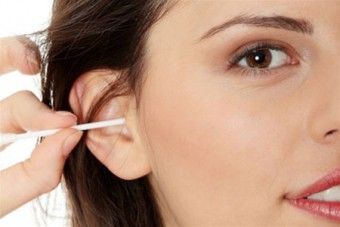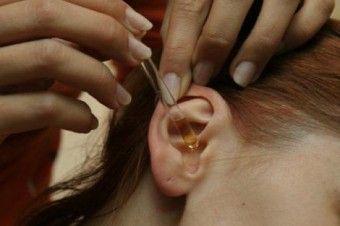Sulfur is constantly accumulating in the auricles – a special secret. When the temporomandibular joint moves, the secret is pushed out of the ear canal. Thus, the body cleans itself. However, for complete cleaning he needs help.
How to clean your ears: the basic rules for regular cleaning

In fact, sulfur is produced to protect the passage from inflammation and minor damage. Trying to carry out “high-quality” cleaning, a person irritates the skin of the passage and reduces its protection.
Therefore, sulfur emission can become more intense or, conversely, decrease. If an increase in the volume of daily produced secretion leads to the need to process the ears more often, its deficiency causes uncomfortable sensations – itching and dryness.
The auditory meatus has a fairly narrow isthmus. A cotton swab easily pushes sulfur masses into it, resulting in a cork. Compressed sulfur significantly reduces hearing. In addition, there is a high risk of damage to the eardrum or auditory ossicles during deep cleaning.
If a person has a tendency to periodically accumulate secretion and compress it, every six months it is necessary to visit an otolaryngologist to remove the cork. Neglect of the procedure leads to poor health: decreased auditory function, otitis media, bedsores of the auditory external passage.
It is strongly discouraged to try to remove the cork yourself. A simple procedure performed by an experienced doctor will take several minutes. At home, trying to wash a cork can lead to inflammation.
Another common mistake is the habit of carrying out the procedure with hydrogen peroxide. This solution is recommended to be used only as a prophylactic to prevent the occurrence of plugs or in the treatment of, for example, suppuration.
In this case, the solution is instilled into the ear canal. Often you can not use peroxide, as there is irritation of the delicate mucosa.
How to clean the ears of sulfur for an adult
In order for the procedure to be effective and not lead to unpleasant consequences in the future, it is enough to clean only the auricle and the beginning of the external auditory canal.
It is advisable to do this during the morning wash or shower:
- It is necessary to soap the finger and draw it along the outer parts of the auricle;
- After washing the finger, the procedure is repeated, removing a soap solution from the skin;
- Another way to remove soap is to pour a little water into your ear and shake your head slightly, tilting it to the side so that the water spills out;
- If it is difficult to get rid of the habit of picking a cotton swab in your ear, you need to remember: you can clean the passage by introducing the stick no deeper than 0.5 cm from the beginning of the passage.
Unlike an adult, a child needs help with hygiene procedures. Therefore, you should know how to perform them correctly..
How to clean the ears of a newborn: step by step instructions

In the newborn, the final formation of the eardrum did not occur yet. Therefore, it is very easy to damage it with a cotton swab..
Of course, the baby needs to clean its ears systematically, doing this with extreme caution:
- Cleaning is carried out approximately once a week. This is enough to keep the aisle and auricle clean. They process the shell itself and the beginning of the ear canal during the procedure;
- You can use special sticks with limiters when the child is a little older. Such sticks are considered safe, as they penetrate shallowly;
- Usually, the procedure is performed after bathing the baby. This is much more convenient, since the water that got into the ears has already softened the sulfur masses;
- The flagella carefully clean the outer part of the shell and the beginning of the passage. If the procedure is performed after the bath, you can use a dry flagellum. If the baby was not bathed, it is recommended to moisten sterile cotton wool in boiled water;
- A newborn, like an adult, cannot be cleaned deeply, since the sulfur secret is a kind of barrier that protects the auditory system from the penetration of pathogens;
- In case of concern of the baby and the accumulation of sulfur, it is necessary to contact the ENT. The doctor will examine the baby and tell you how to clean the child’s ears in inflammatory processes. Before visiting the ENT, you can’t use your own medicines.

However, you should not resort to this method yourself, since the dosage of peroxide and the frequency of treatment are directly related to the age of the baby.
A procedure such as ear cleaning should be done regularly. If discomfort, noise and hearing loss occur, you need to visit a specialist who will help get rid of the unpleasant condition and advise what preventive measures should be taken to prevent the accumulation of sulfur.










